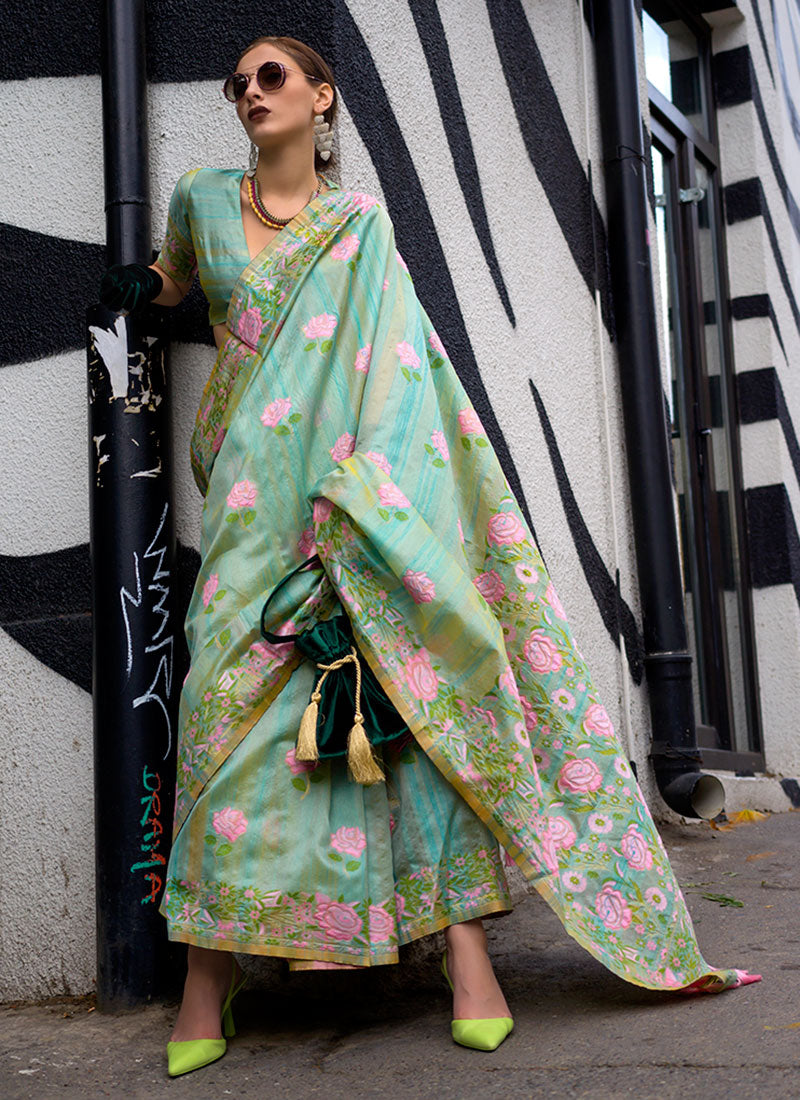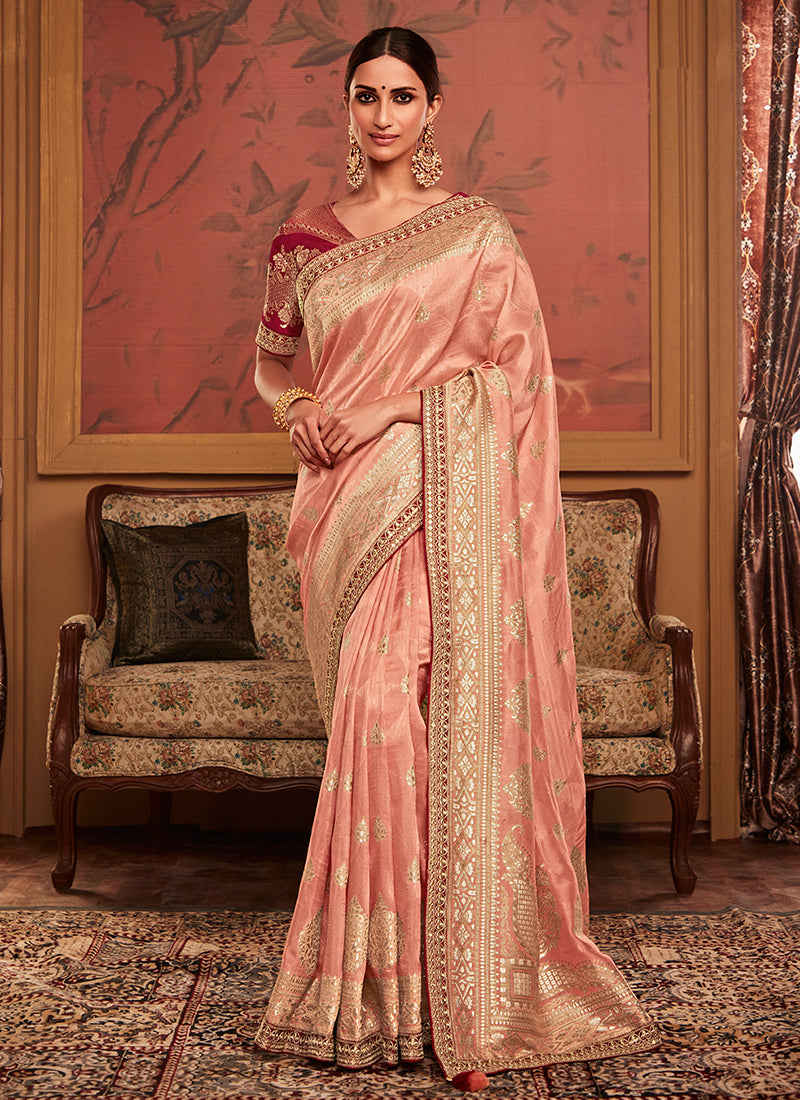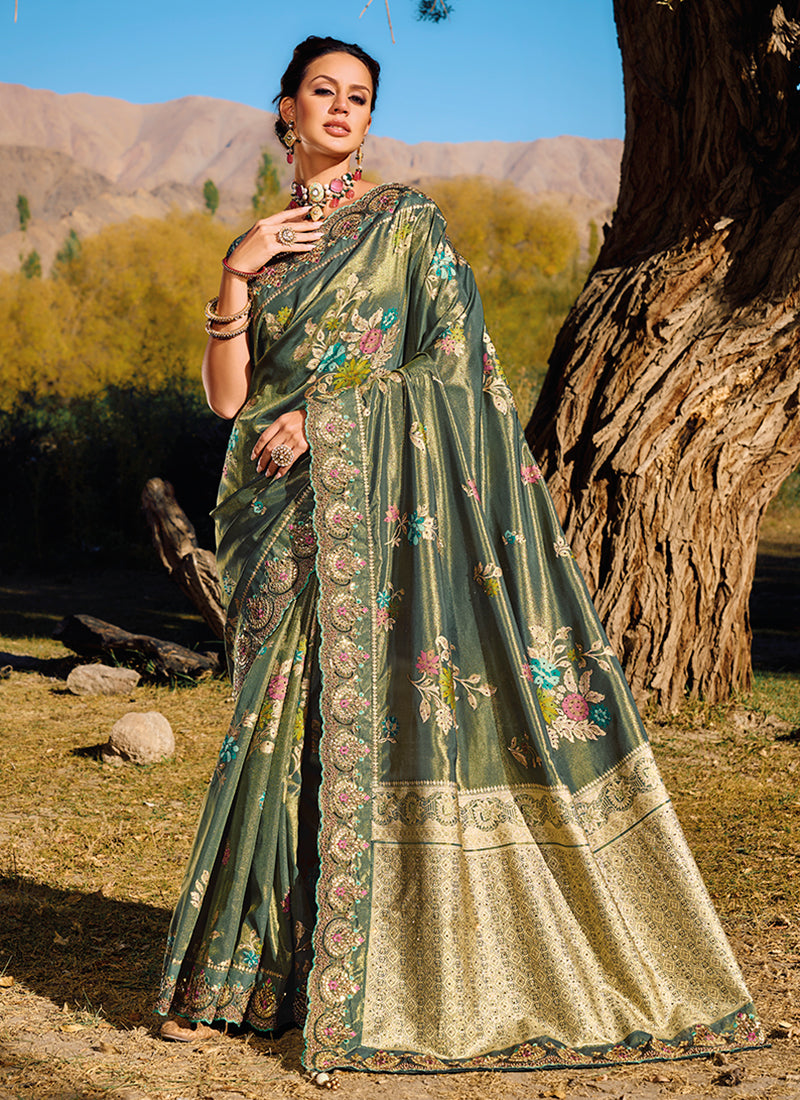Introduction:
In the rich tapestry of Indian culture, few garments hold as much significance and beauty as the saree. This iconic attire, draped gracefully around the body, embodies tradition, elegance, and timeless charm. From its origins steeped in history to its contemporary resurgence on fashion runways worldwide, the saree remains an enduring symbol of femininity and cultural heritage. In this exploration, we delve into the enchanting world of sarees, celebrating their diversity, craftsmanship, and enduring appeal.
The Origins of Saree:
The history of the saree is as intricate and diverse as the fabric itself. Originating in the Indian subcontinent, the saree finds mention in ancient texts dating back thousands of years. Its evolution can be traced through centuries of artistic expression, regional influences, and socio-cultural changes. From the cotton weaves of Bengal to the opulent silks of Kanchipuram, each region has contributed to the rich tapestry of saree traditions.
Craftsmanship and Artistry:
At the heart of every saree lies the craftsmanship and artistry of skilled artisans. From handloom weavers to master embroiderers, generations of craftsmen have honed their skills to create exquisite sarees that are works of art in themselves. Whether it's the intricate Jamdani of West Bengal or the vibrant Bandhani of Gujarat, each saree reflects the cultural ethos and creative ingenuity of its makers.
Regional Variations:
One of the most fascinating aspects of the saree is its regional variations, each telling a unique story of tradition and heritage. From the Kanjeevarams of Tamil Nadu to the Paithanis of Maharashtra, every region boasts its own distinctive style of saree, characterized by its weave, motifs, and draping techniques. These regional variations not only add to the diversity of saree culture but also serve as a testament to India's rich textile heritage.
The Saree in Modern Fashion:
While deeply rooted in tradition, the saree has also evolved with the times, adapting to changing tastes and fashion trends. In recent years, the saree has experienced a renaissance, with designers and fashionistas alike reinterpreting this classic garment in innovative ways. From contemporary drapes to fusion ensembles, the saree has found a place on global runways, captivating audiences with its timeless elegance and versatility.
Empowering Women:
Beyond its aesthetic appeal, the saree holds profound cultural significance as a symbol of womanhood and empowerment. For generations, women across India have adorned the saree not only as a mark of tradition but also as a source of strength and identity. Whether worn in daily life or on special occasions, the saree embodies the grace, resilience, and dignity of the women who wear it, transcending boundaries of age, class, and culture.
Preserving Tradition:
In an age of rapid globalization, the saree stands as a beacon of tradition and continuity, connecting the past with the present and preserving centuries-old craft traditions. As consumers increasingly embrace sustainable and handcrafted products, the demand for handloom sarees has seen a resurgence, providing livelihoods to rural artisans and revitalizing traditional weaving communities.
Conclusion:
In a world where fashion trends come and go, the saree remains a timeless classic, embodying the essence of Indian culture and craftsmanship. From its ancient origins to its contemporary revival, the saree continues to captivate hearts and minds with its beauty, elegance, and enduring appeal. As we celebrate the legacy of this iconic garment, let us embrace the saree not just as a piece of clothing but as a living testament to the rich tapestry of Indian heritage and the timeless allure of tradition.













